Presidential Administrative Order No. 235
August 25, 1970
Prohibited the wounding, taking, selling, exchange and/or exporting, processing, and killing of the eagle.
Two decades after conceptualization and more than four years of restoration, the Philippines finally has a Museum of Natural History to call its own. Its launch was met with enthusiasm when it opened its doors to the public in time for International Museum Day 2018, and throngs of people continue to visit everyday.
What's in store for you within the beautiful walls of the National Museum of Natural History? Take this digital tour to find out.
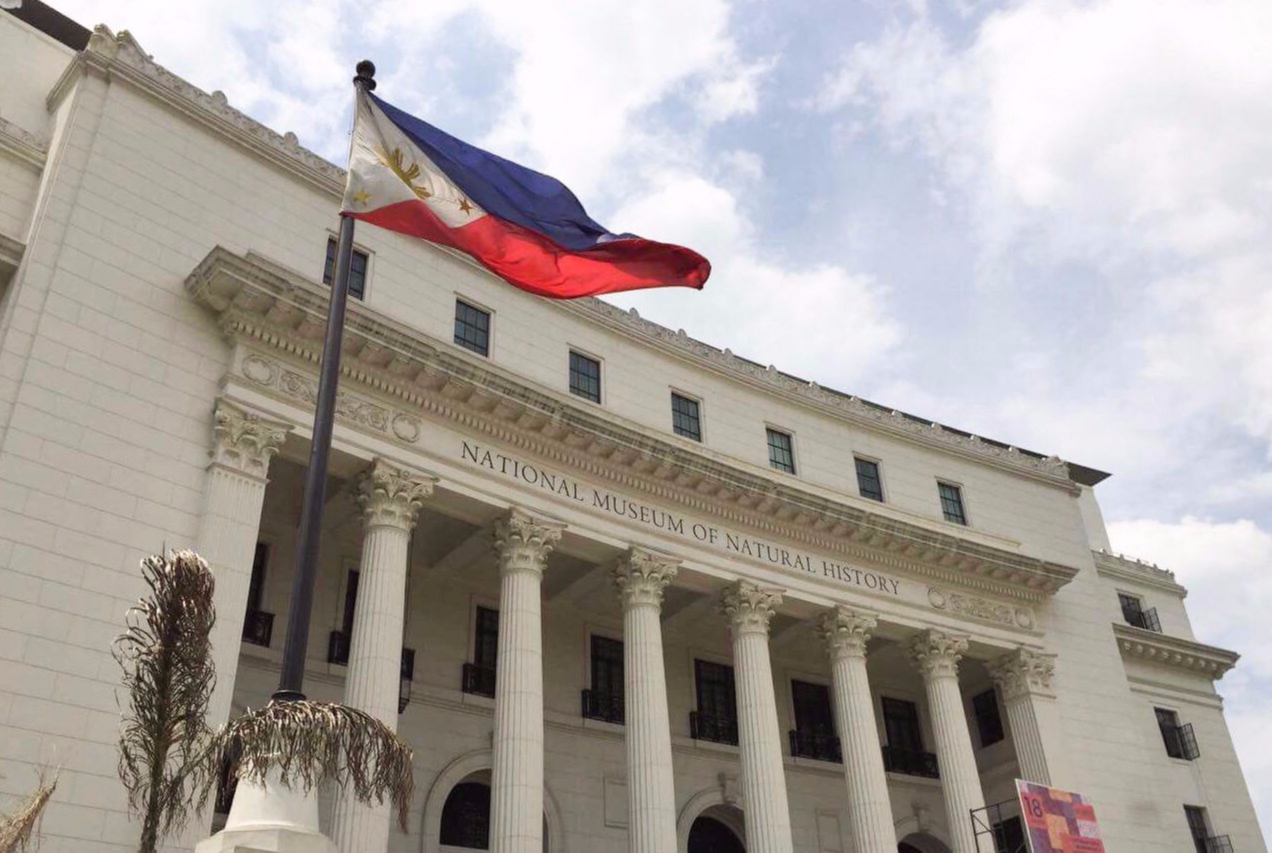
THE NATIONAL MUSEUM OF NATURAL HISTORY is housed in what was formerly the Department of Tourism building, which was originally built in 1930. The facade was originally designed by architect Antonio Toledo.
The neoclassical look of the building is in accordance with the plans of Daniel Burnham, the renowned architect and urban planner who laid the design for the center of the City of Manila.
The building is part of the historic National Museum complex by Rizal Park. Across the Teodoro F. Valencia circle from the National Museum of Natural History is the National Museum of Anthropology, better known as the Museum of the Filipino People. Once the home of the Department of Finance, this building houses the anthropological and archeological divisions of the national museum.
Across Finance Road from the Museum of the Filipino People is the National Museum of Fine Arts of the Philippines, also known as the National Art Gallery. This is the old Senate building whose image can be seen on the reserve side of the New Generation/Bangko Sentral ng Pilipinas P50 bill.

Retrofitting of the old DOT building began in 2013 for a museum that will house the country's diverse flora and fauna. While no changes were made to the facade, Dominic Galicia Architects designed the interiors with an environmental theme in mind.
As part of the structural retrofit, foundations were prepared to receive the supplementary shear walls that attached to the existing concrete walls.
The museum was designed to house 12 permanent galleries across four floors. The two upper floors will house function rooms and the roof garden.
Construction was expected to be completed in 2015, but the museum did not open until 2018. The final price tag for the upgrade: P2.4 billion.
In 2013, much excitement greeted the announcement that the Philippines will have its own world-class Museum of Natural History showcasing endemic plants and animals from the Philippines.
Museums bridge the past and present, but the government believes they can also meet the challenges of the future.
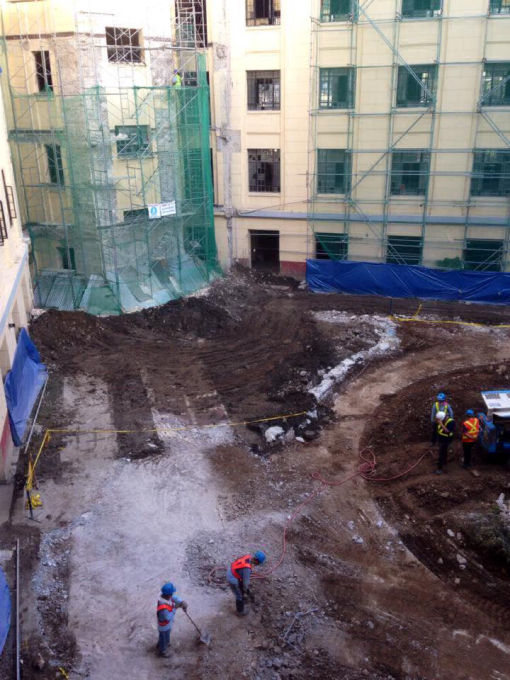
FOYER, 2014
Work began on the project in 2014. The photo shows construction on the foyer.
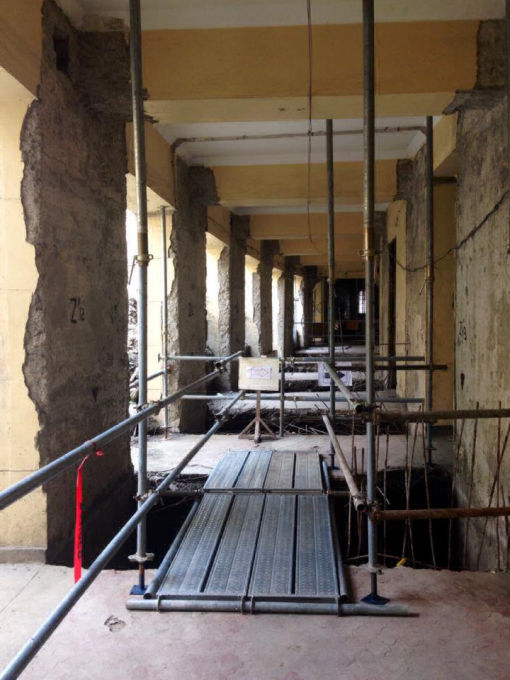
HALLS, 2014
Supplementary shear walls were attached to the existing concrete walls, shown here at Ground Floore Agrifina Wing.

FOYER, 2015
Growing steadily from the museum grounds is the "Tree of Life," the centerpiece of the building.
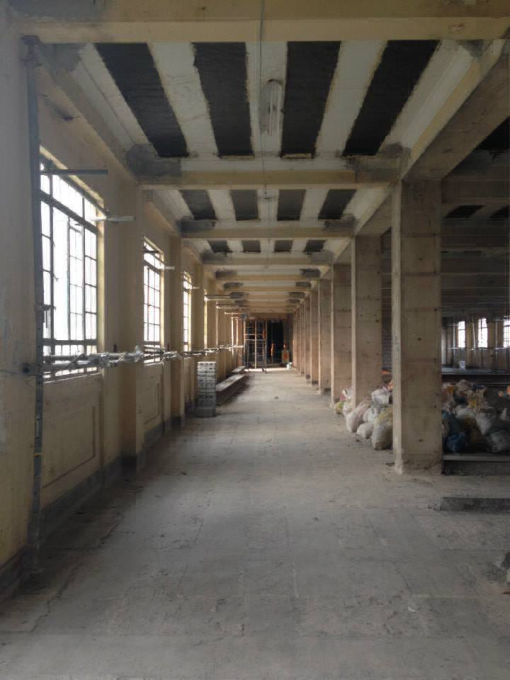
HALLS, 2015
Construction was expected to be completed in 2015, but it would be three years more before these halls open to the public.
LIGHT STREAMS INTO THE LOBBY via the glass canopy that serves as the crown of the steel structure known as the Tree of Life. The glass triangular panels lend a festive vibe to the otherwise stark lobby.
Architect Dominic Galicia's inspiration came after speaking with a group of scientists who were collecting leaf specimen. He asked one of the scientists what the purpose of the collection was.
"What we're after," the scientist told him, "is DNA."
That seed of an idea bloomed into the Tree of Life.
Dominic Galicia
Architecture
Tina Periquet
Interior Design
Aside from the
obvious shape of a tree,
the structure also takes inspiration from a DNA strand.
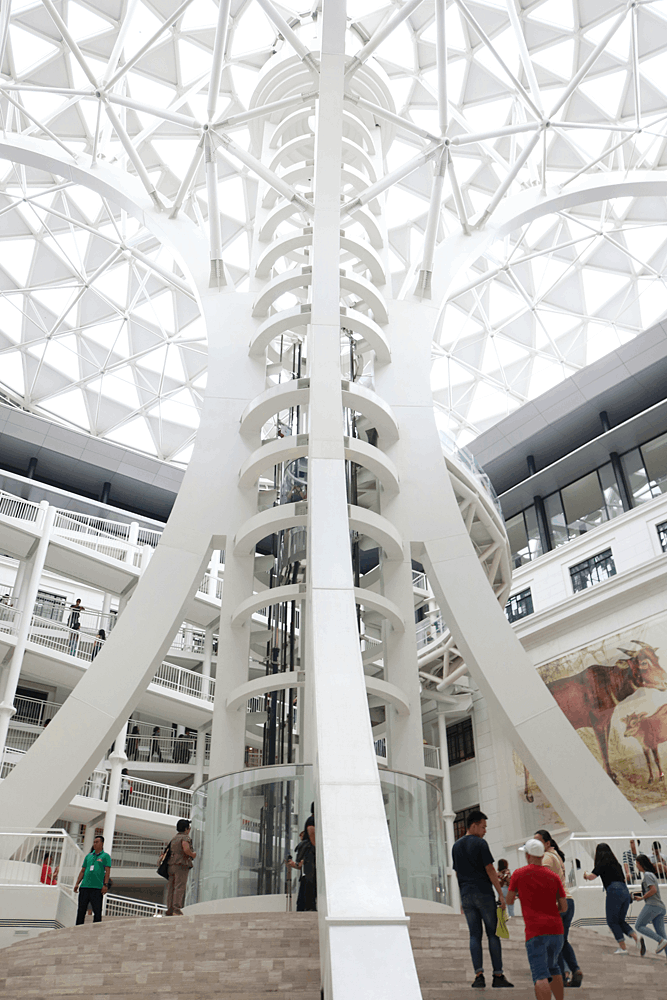
Encased in the structure is a glass elevator.
It is recommended that visitors tour the museum from top to bottom.
Yes, you can definitely take that shot for your Instagram.
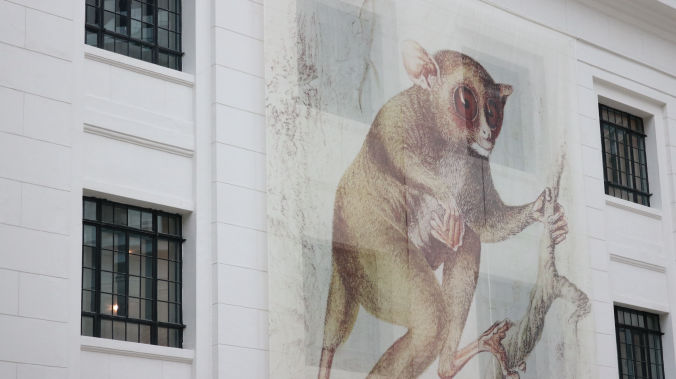
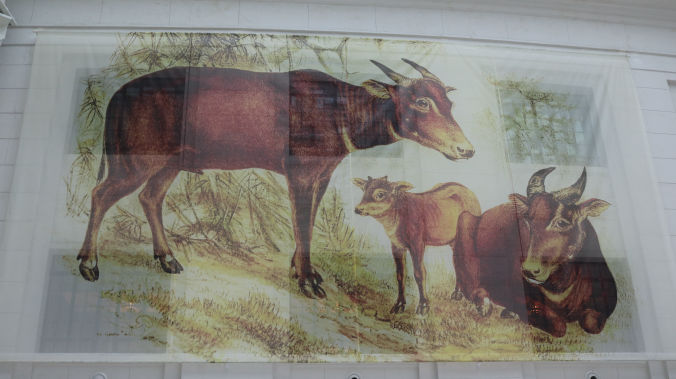
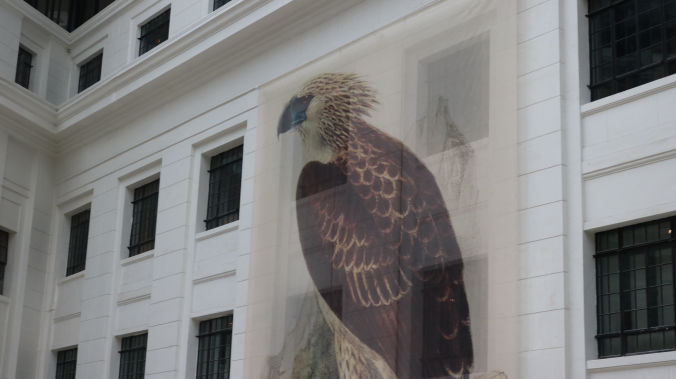
The National Museum of Natural History is open every day from 10 a.m. to 5 p.m. Admission is free.
People thought that weeks after the launch, fewer people would visit the museum, but throngs of people are still coming specially on the weekends. If you plan to visit the museum, prepare for long lines. Keep in mind that management reserves the right to refuse visitors who arrive after 4:30 p.m.
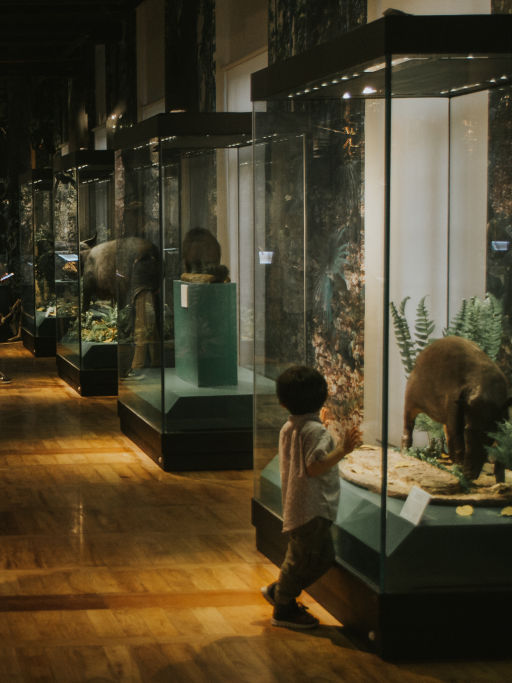
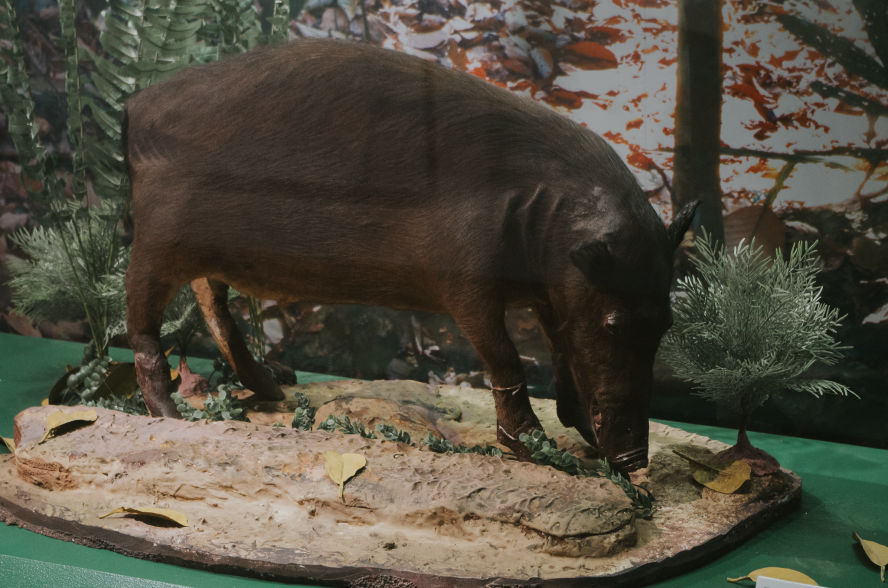
The Exhibits: What to See
The first gallery of the museum, "Philippine Biodiversity", is on the fifth floor. Adjacent to it are three other galleries, namely, "The Geology of the Philippines", "Minerals and Energy Resources", and "Life Through Time." These exhibits focus on the ground upon which life sprung here in the Philippines.
A flight down are four more galleries, namely "Mossy, Montane and Pine Forests", "Lowland Evergreen Rainforests", "Ultramafic and Limestone Karst Forests", and "Freshwater Wetlands." These capture the lush beauty of our forests.
On the third floor are "Mangroves, Beaches, and Intertidal Zones" and "The Marine Realm." Here, the museum implores visitors to marvel at the diversity of marine life and show appreciation for it by being more mindful of the effects of human life on their habitat.

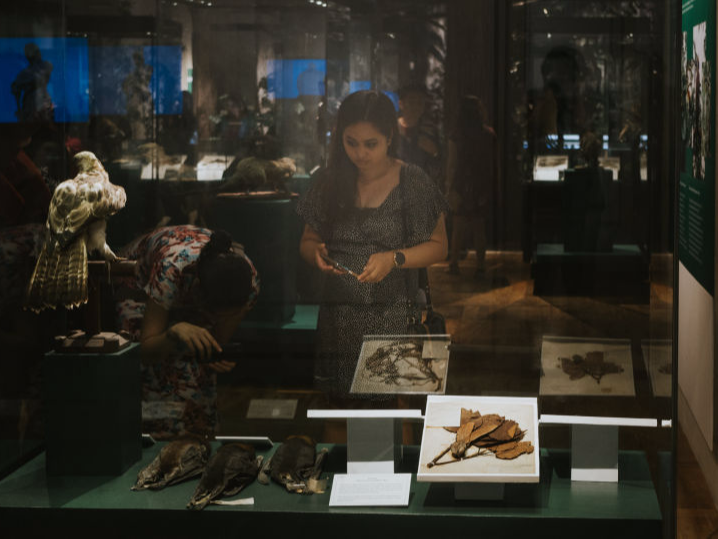
Here's what else you need to know before visiting:
ONE OF THE STARS OF THE MUSEUM IS LOLONG, certified by the Guiness Book of World Records as the largest saltwater crocodile held in captivity at 6.17 meters or 20.3 feet.
Lolong was captured in September 2011 in the Agusan Marsh. He was named after crocodile hunter Ernesto "Lolong" Goloran Cañete, who died of a heart attack in search of the animal.
He became an international sensation shortly after his capture, rising to become the top story on Google News as well as other international media outlets. His capture cast a spotlight on the need to protect the country's marshlands and wetlands, which are vital to the Philippines' biodiversity, as they serve as an important habitat not just to crocodiles, but to migratory birds, fishes, and endangered species. His stint in captivity also sparked a fierce debate over whether he should be released back into the wild.
Lolong remained captive at the Bunawan Ecopark and Research Center until his death in February 2013.
A necropsy performed on Lolong by the Protected Areas and Wildlife Bureau of the Department of Environment and Natural Resources showed lesions pointing to possible multiple organ infections prior to being captured.
To pay tribute to Lolong, the museum will feature not one, not two, but three displays of the crocodile that continues to capture the public imagination. A replica of Lolong is on display to welcome visitors into the museum. His skeleton, meanwhile, hangs from the ceiling in another room. His preserved body has also been transfered to the museum and will be on display soon.
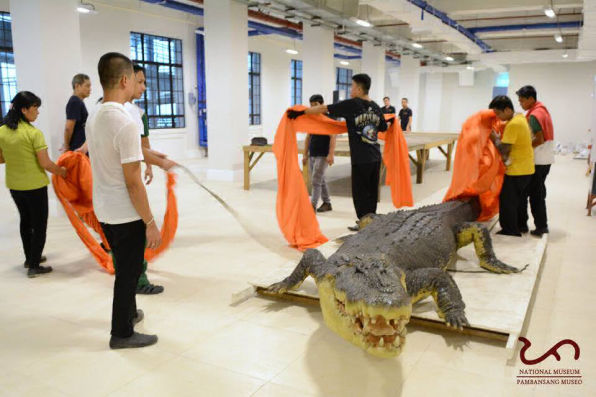
Lolong's preserved remains were transferred to the museum in 2017. It took 18 people to lift the stuffed crocodile and help him settle into his new home.
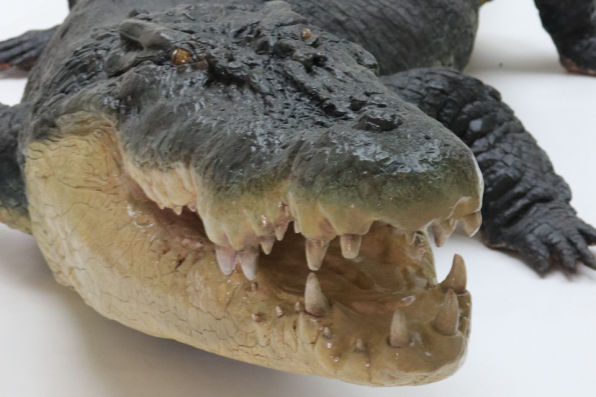
In addition to keeping your hands to yourself, museum staff will make a strong request for you to refrain from taking wacky photos with Lolong's replica found in the lobby.
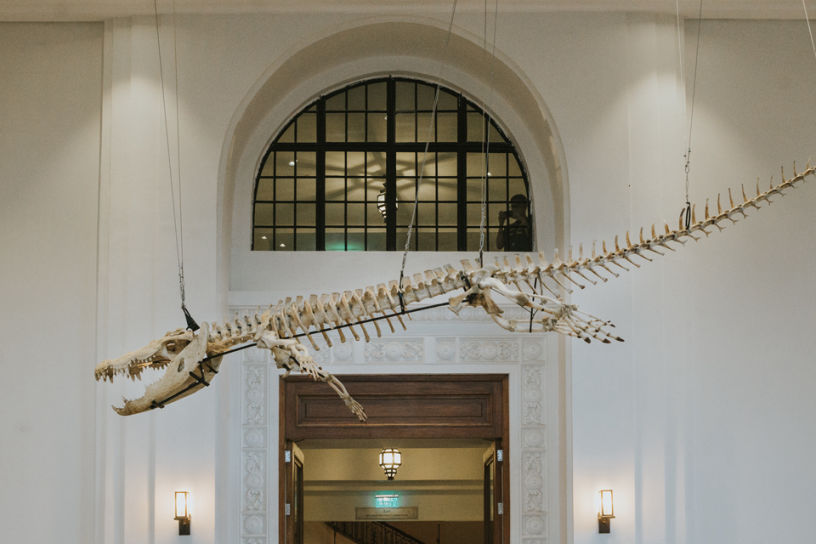
Lolong's actual skeleton hangs from the ceiling in one of the rooms in the museum, giving visitors an idea of what the fierce creature is made of.
SHARING A ROOM with Lolong's skeleton are the fossilized remains of a Rhinoceros philippinensis.
The fossils, which are 75 percent complete, were excavated from Kalinga. Electron spin resonance dating on its tooth put them at 709,000 years old. Researchers found cut marks on the bones, suggesting that early humans used tools to remove flesh from it. Some showed marks from tools designed to extract bone marrow.
Prior to this discovery, the earliest record of human activity in the Philippines was linked to a bone from a foot that belonged to a Homo sapien believed to be 67,000 years old.
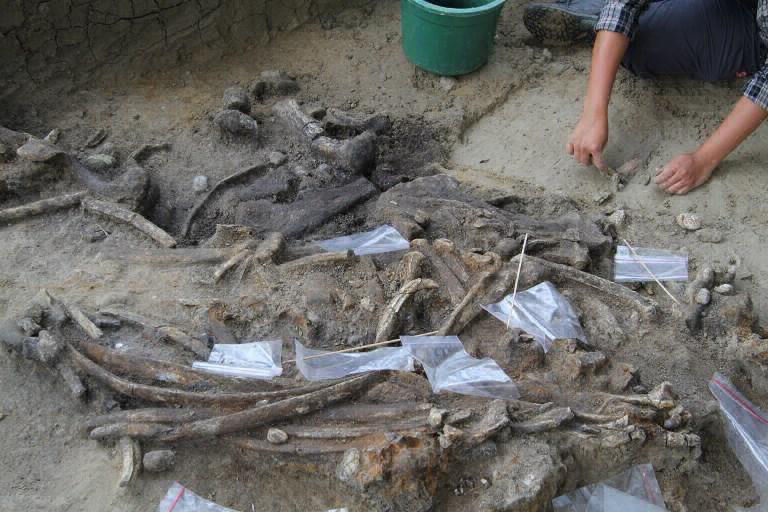
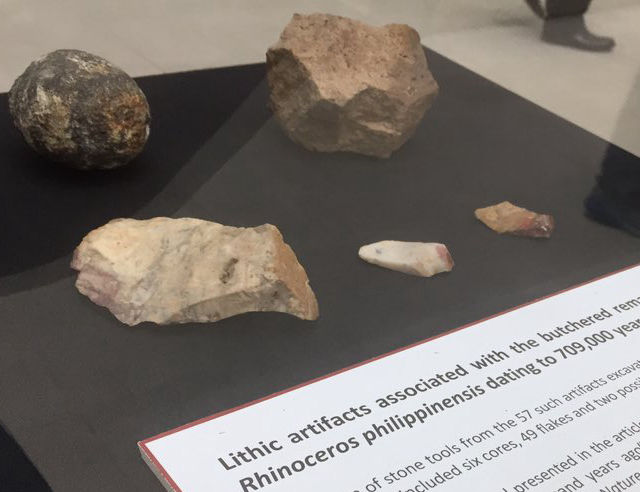
Excavated alongside the rhinoceros fossils are hammerstones and other tools used by early humans who settled in the Philippines.
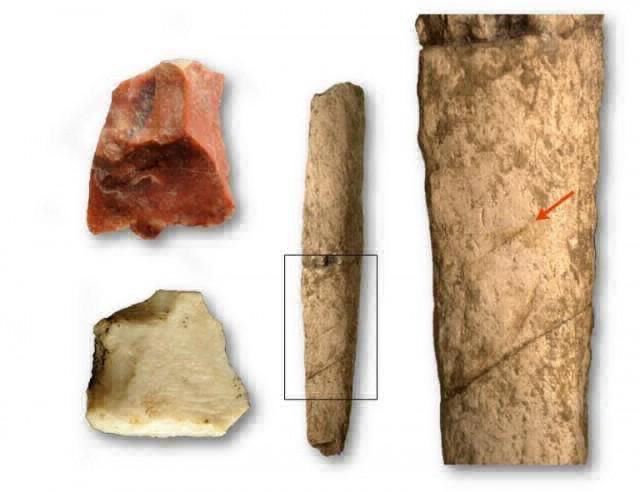
This handout image shows two cut flakes and a rib of rhinoceros at the Kalinga site.
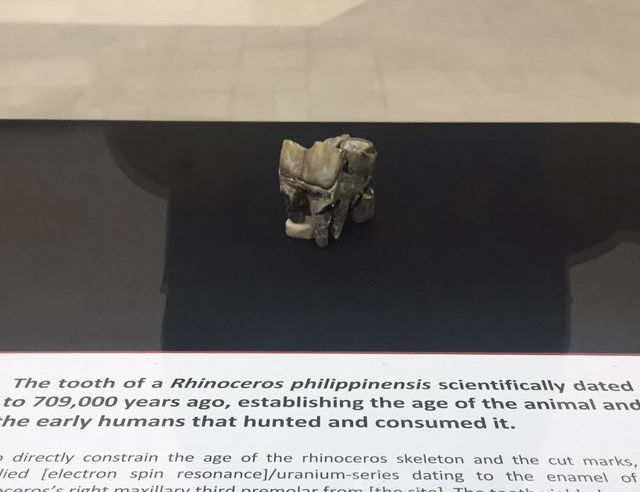
The rhinoceros fossil was dated by this tooth, a right maxillary third premolar.
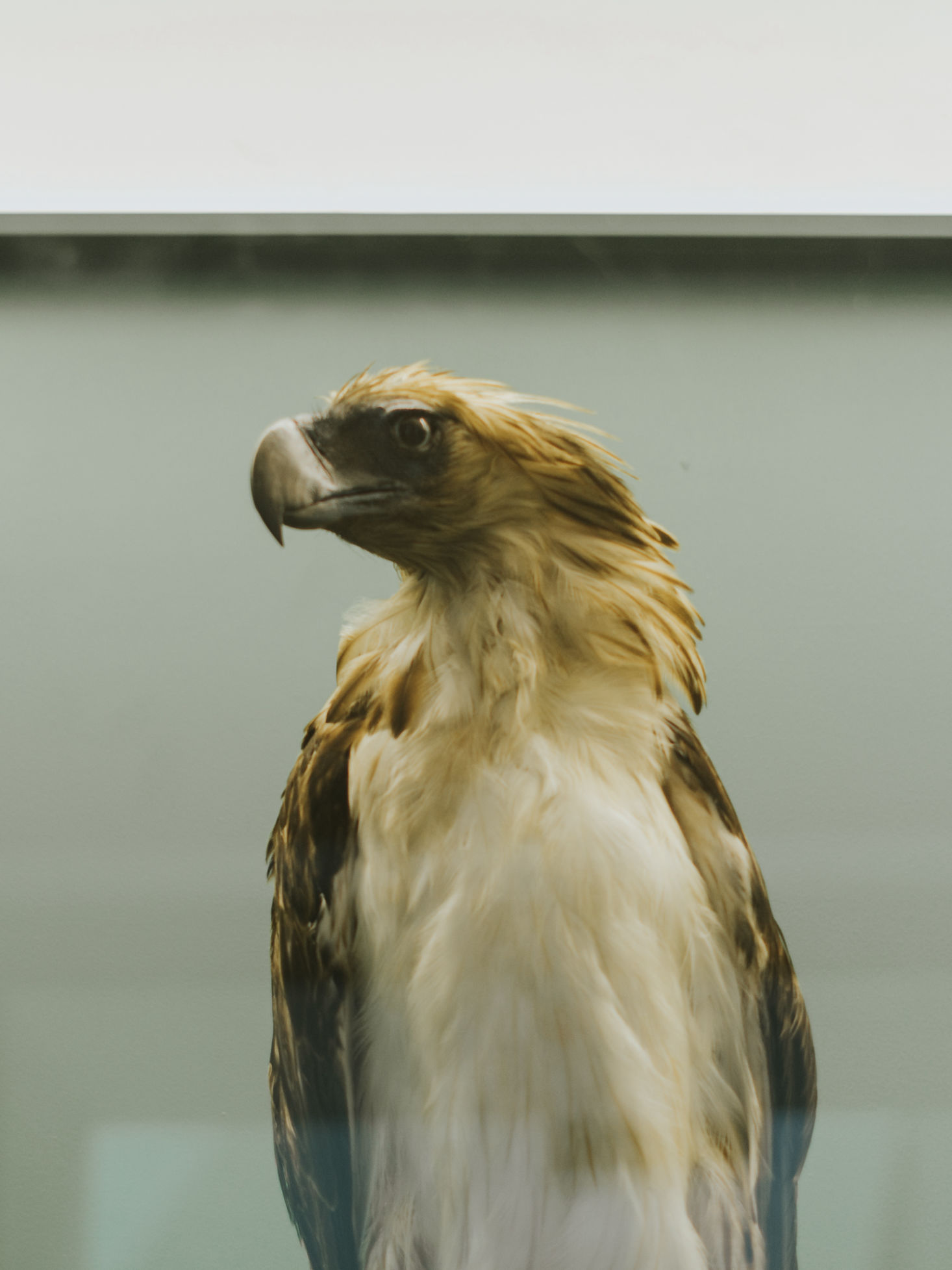
BEHIND THE GLASS and perched atop a piece of wood is a replica of Tinuy-An, a female Philippine eagle. She was released in Mt. Kitanglad in Bukidnon in 2008.
Tinuy-An was set to be paired with Kagsabua, but Kasagbua was shot by a farmer who was not aware that the bird he was shooting is a critically endanged species.
According to the Philippine Eagle Foundation, there are only 400 pairs remaining in the wild.
Gunshots accounted for nine out of every 10 Philippine eagle casualties recorded by the foundation from 2008 to 2015.
August 25, 1970
Prohibited the wounding, taking, selling, exchange and/or exporting, processing, and killing of the eagle.
November 9, 1970
Declared the species as a protected bird in the Philippines and mandates the DENR to promulgate rules and regulations for its preservation.
May 8, 1978
Changed the name Monkey-Eating Eagle to “Philippine Eagle.”
July 4, 1995
Declared Philippine Eagle as the National Bird. The law also ordered the DENR to secure the viability of the Philippine Eagle population.
July 30, 2001
Provided for the conservation and protection of wildlife resources and their habitats, appropriating funds therefore and for other purposes.
BEYOND ITS FOCUS on Philippine flora and fauna, the museum also casts a spotlight on the Filipino naturalist. This is fitting considering the Philippines' national hero, Dr. Jose Rizal, is "an expert in or student of natural history," as he used his infinite curiosity to document numerous endemic flora and fauna in the country throughout his life.
This museum is a testament to the wonders provided by the natural world, which the likes of Dr. Dioscoro S. Rabor sought to preserve.
Rabor is often credited as the "Father of Philippine Conservation" for his tremendous effort in campaigning for the protection of the Philippine Eagle and other animals, especially those endemic to the Philippines.
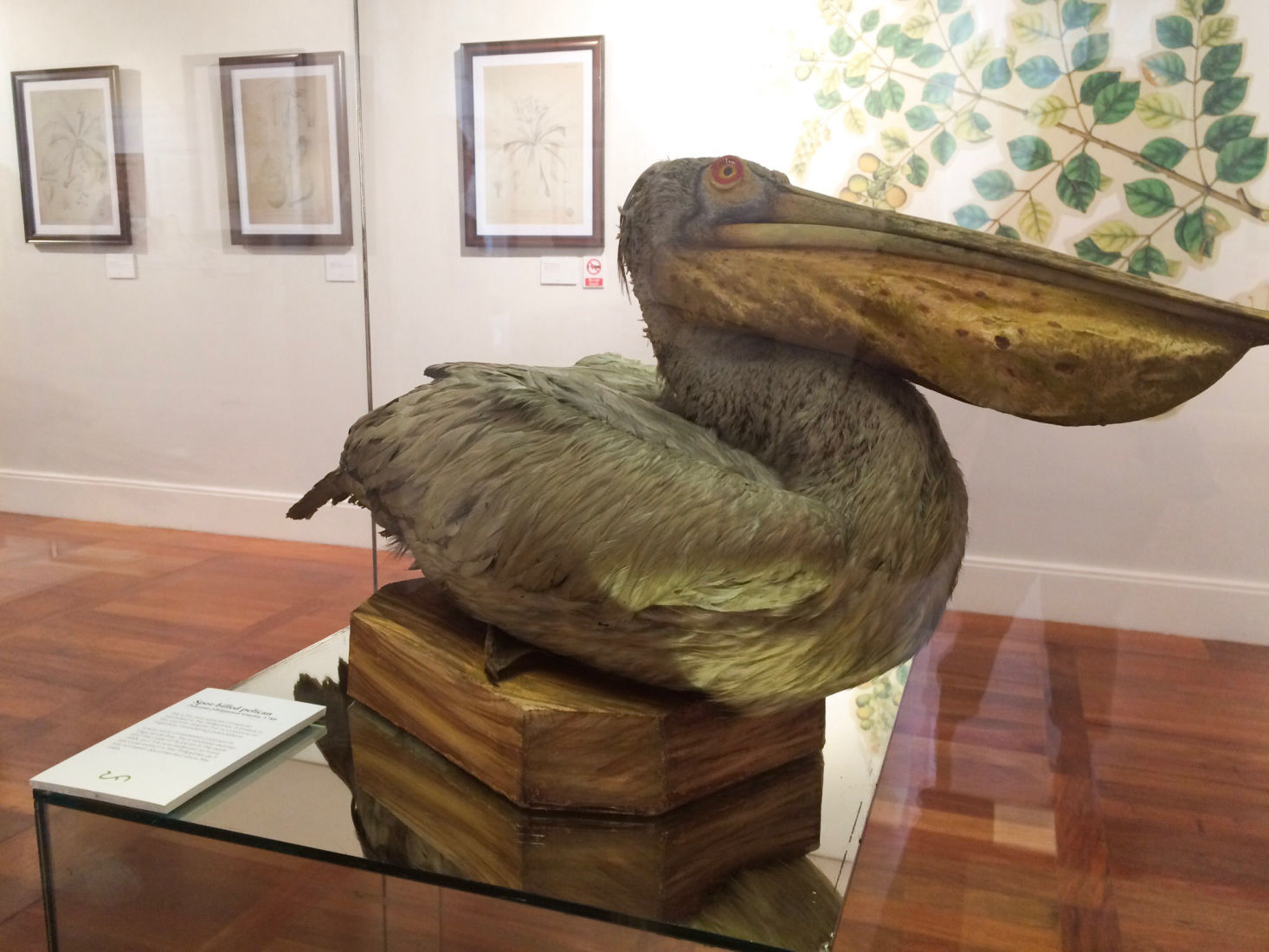
BLAST FROM THE PAST. The Pelecanus philippensis (spot-billed pelican, grey pelican) was named by German naturalist, botanist, entomologist, herpetologist, and malacologist Johann Friedrich Gmelin in 1789. Although there must have been an abundance of these birds at the time, they are now locally extinct.
The museum distinguishes itself by encouraging the visitors to interact with the exhibit. There are designated areas in the galleries where guests can be part of the exhibit, like the submarine in the Marine Realm. The Pioneering Naturalist is particularly engaging, as there is a sketching section where people can sit and understand the charm of illustrating the country's flora.
As visitors explore the museum, they travel to the different habitats these beautiful animals live in and perhaps, as they study the details of the numerous butterflies on display or admire the plumage of birds found in the Philippines, they take another step towards being naturalists themselves.
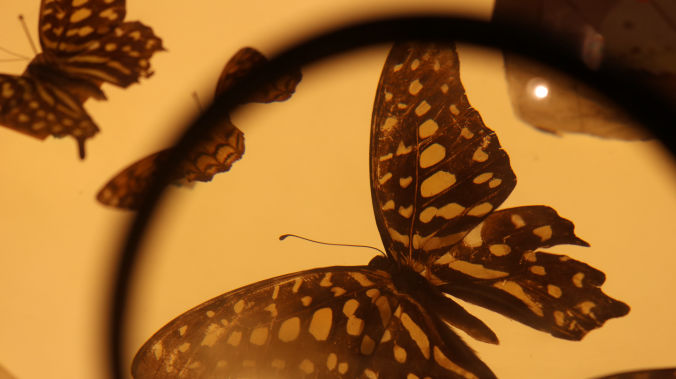
The museum is interactive in many ways. In one interactive exhibit, visitors can examine the details of a preserved butterfly.
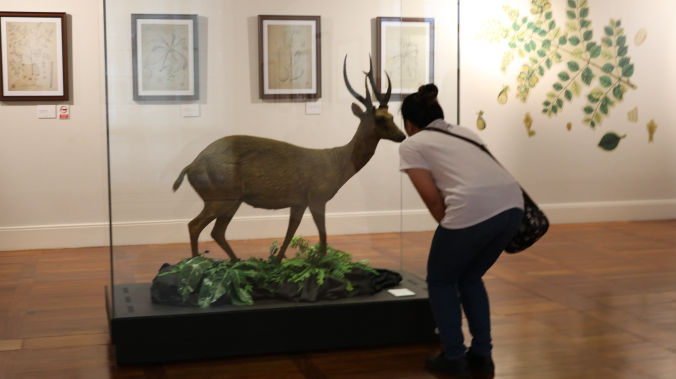
Few have had the chance to see the shy and now vulnerable Philippine Brown Deer. The museum allows visitors look at this beautiful creature.
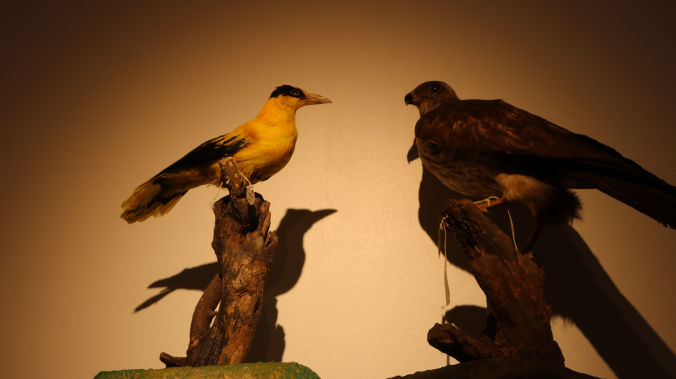
If bird-watching strikes you as a strange hobby, perhaps a survey of the species you can see in the Philippines might change your mind.
THE WATERS OF THE PHILIPPINES are significant marine habitats for a diverse range of creatures. According to Greenpeace Philippines, our coral reefs, seagrass beds, mangrove forests, and deeps seas "are estimated to host at least 2,000 species of fish, 5,000 species of clams and other mollusks and crustaceans, 22 species of whales and dolphins, more than 900 species of seaweed, and more than 400 species of corals." The museum's exhibit on The Marine Realm takes visitors under the sea for a look at the diversity of the life aquatic in the Philippines.
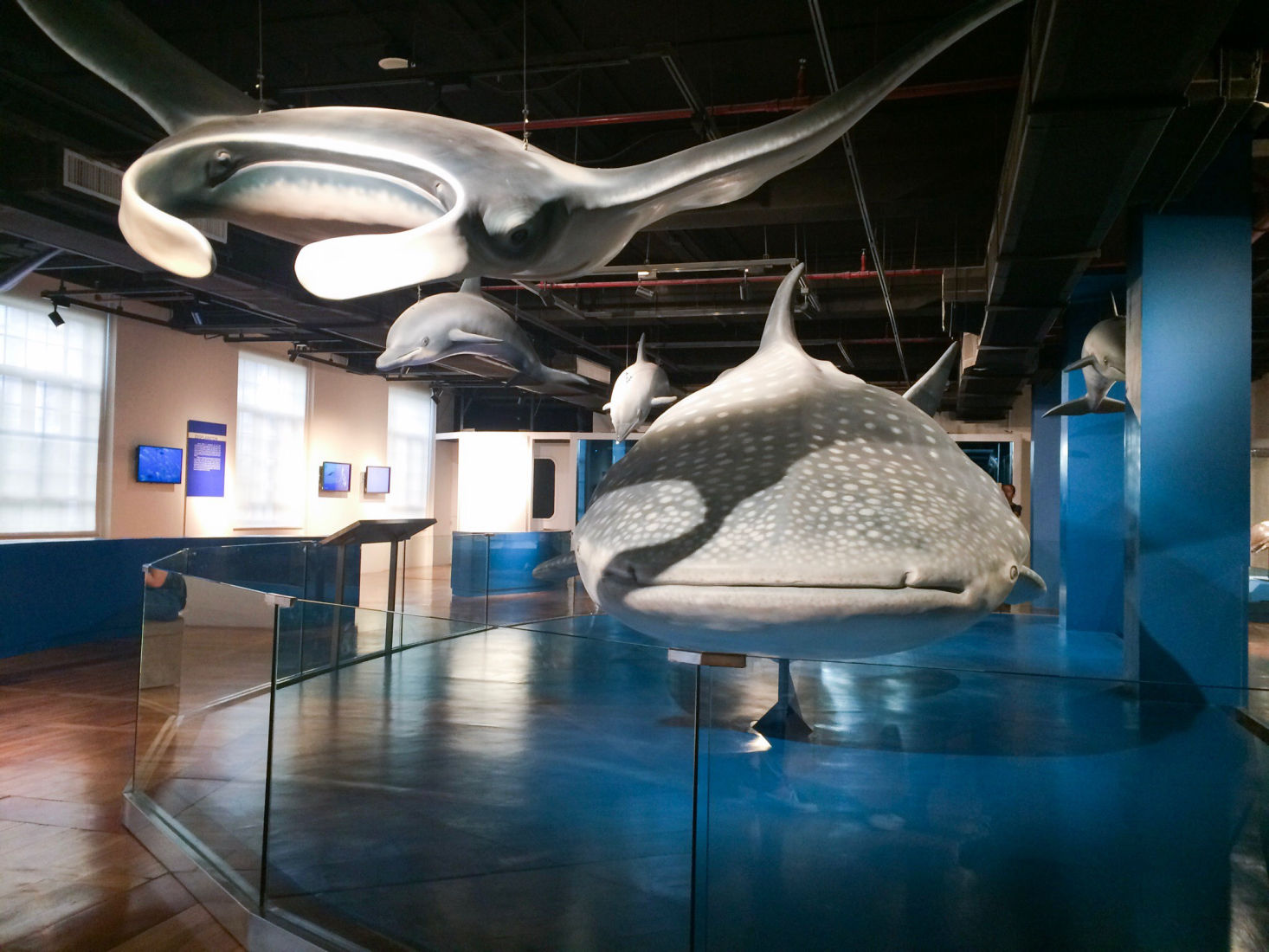
Whale Sharks and Manta Rays
The whale shark is considered the largest fish in the sea, and the Philippines has been listed as one of the places in Earth to see and swim with them.
Manta rays meanwhile are considered the biggest ray in the planet, and they can be seen in the Philippines as well.
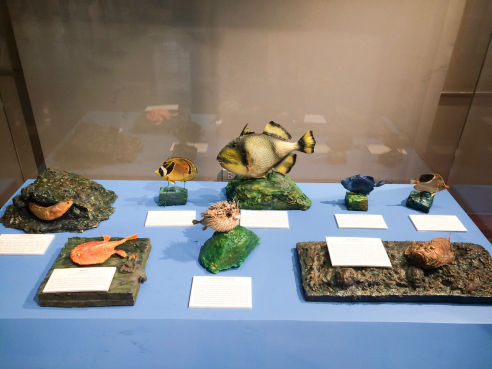
The museum has an extensive display of fishes endemic to Philippine waters.
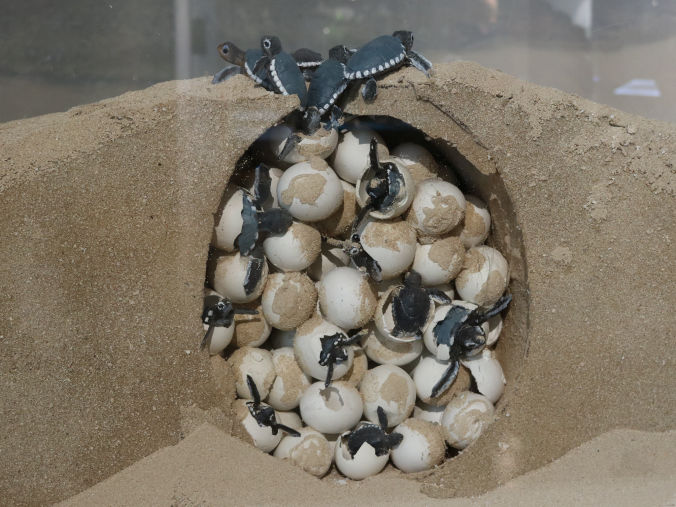
This cross-section shows green sea turtles emerging from their shells and crawling out to the shores of Turtle Island in Tawi-Tawi.
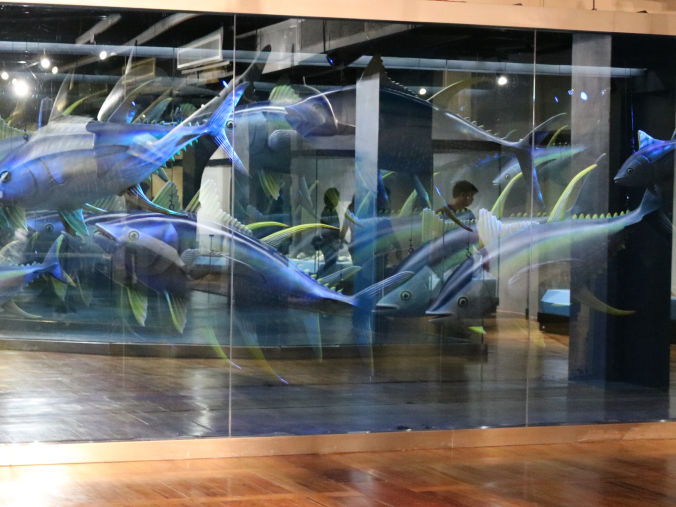
Framed in glass is a school of yellowfin tuna, the largest seafood export commodity of the Philippines.
Coming Soon: The Dipaculao Great White Shark
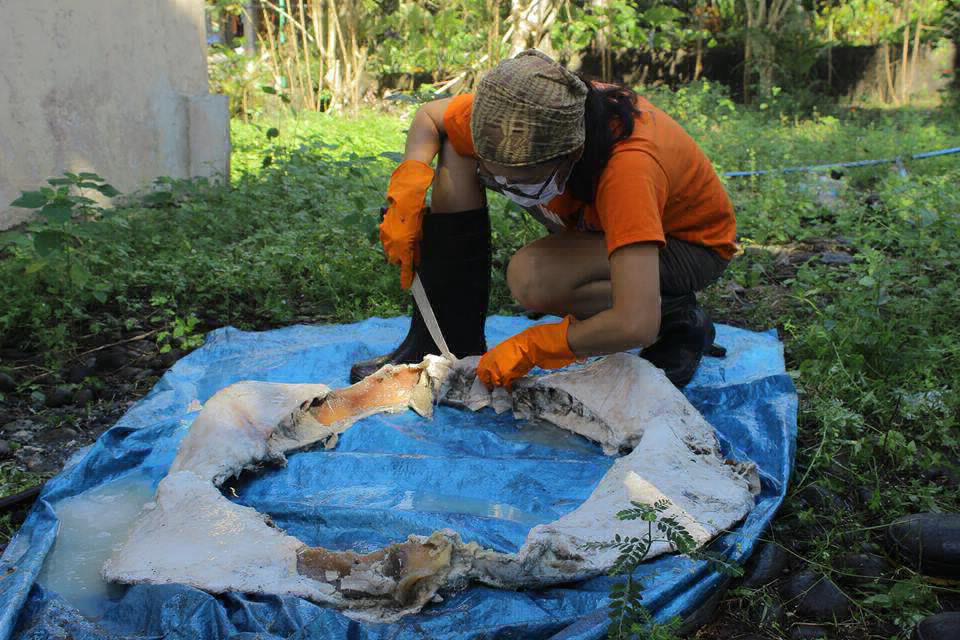
In January 2018, a 17-foot female great white shark washed ashore in Barangay Lobbot, Dipaculao, Aurora.
The species is classified as "vulnerable" by the International Union for Conservation of Nature due to their dwindling numbers. Only four great white sharks have ever been spotted in the Philippines.
A National Museum team led by zoologist Dr. Jo Marie Acebes exhumed the shark from the beach where it was buried and began reconstruction work. The remains will be prepared for display at the National Museum of Natural History.
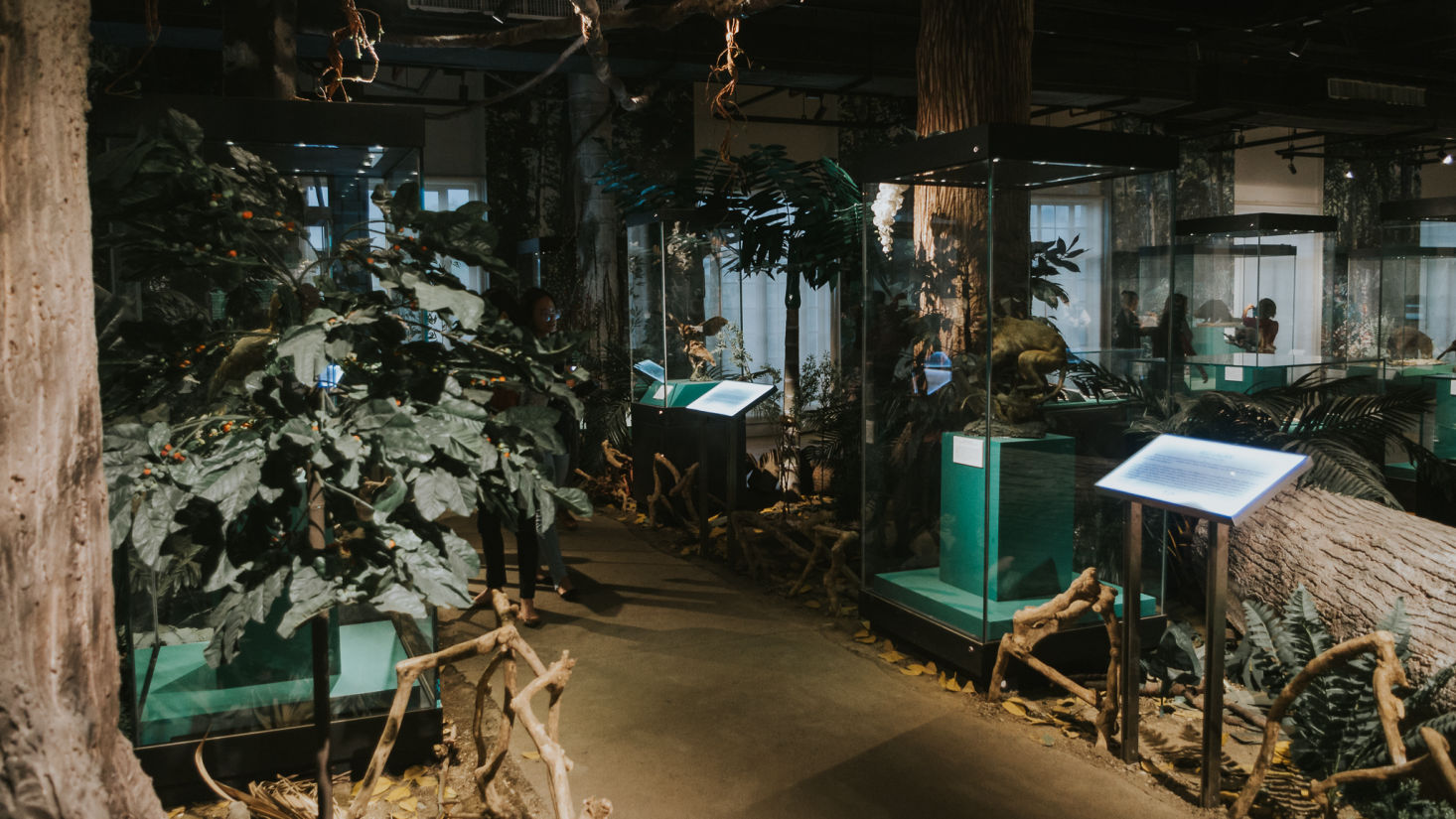
THE MANGROVES, BEACHES, AND INTERTIDAL ZONES exhibit is an immersive experience. Visitors can try to find birds shielded by leaves and explore the environment where different species survive and thrive.
Mangroves are the "rainforests of the sea." Of the world's 70 mangrove species, 46 can be found in the Philippines, according to the Department of Environment and Natural Resources.
Mangroves serve as nursing and feeding grounds for fish and other sea creatures. People also benefit greatly from mangroves, as they protect coastal areas from erosion and storm surges.
On top of these, mangroves are efficient in sequestering carbon dioxide from the atmosphere.
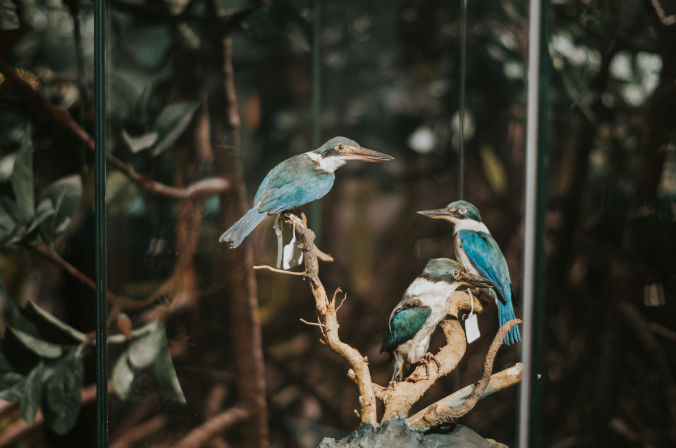
The most common and conspicuous of all resident kingfishers. Varied diet ranging from fish and crabs to grasshoppers and lizards.
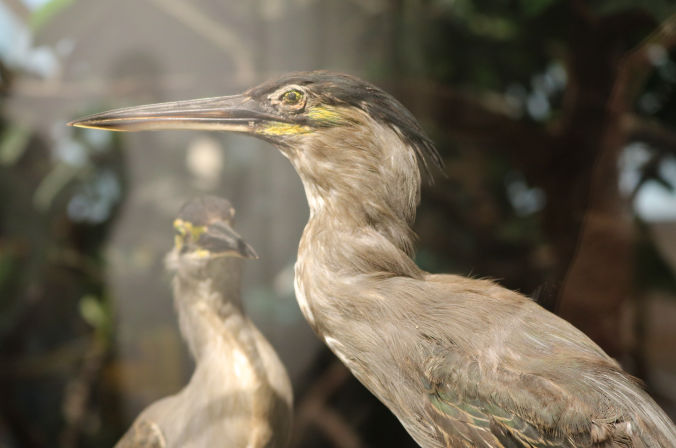
Common, with resident and migrant population. Perches motionless, shy and solitary. Commonly seen in Tambo mudflats and Coastal Road lagoon. Also recorded at the Ateneo campus in Quezon City.
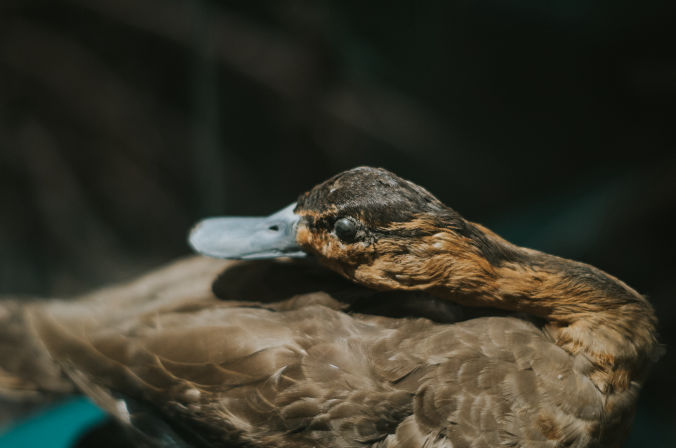
Dark brown crown and line through eye with fairly uniform greyish brown body. Often flocks with other surface-feeding ducks. The only endemic duck in the Philippines.
COLLARED KINGFISHER, PHILIPPINE DUCK: YVAN LIMSON/GMA NEWS
STRIATED HERON: AYA TANTIANGCO/GMA NEWS
THE IMMERSIVE EXPERIENCE OF THE MANGROVE exhibit is by design. National Museum director Jeremy Barns tells Mabuhay Magazine that they were interested in displaying not just animals, but their homes.
"We have the luxury of doing things in a more contemporary way, so what we're doing is displaying by habitats — there is no room that's just mammals, just insects and so on."
There will always be something new to see
at the National Museum of Natural History
as new artifacts are acquired and the collection expands.